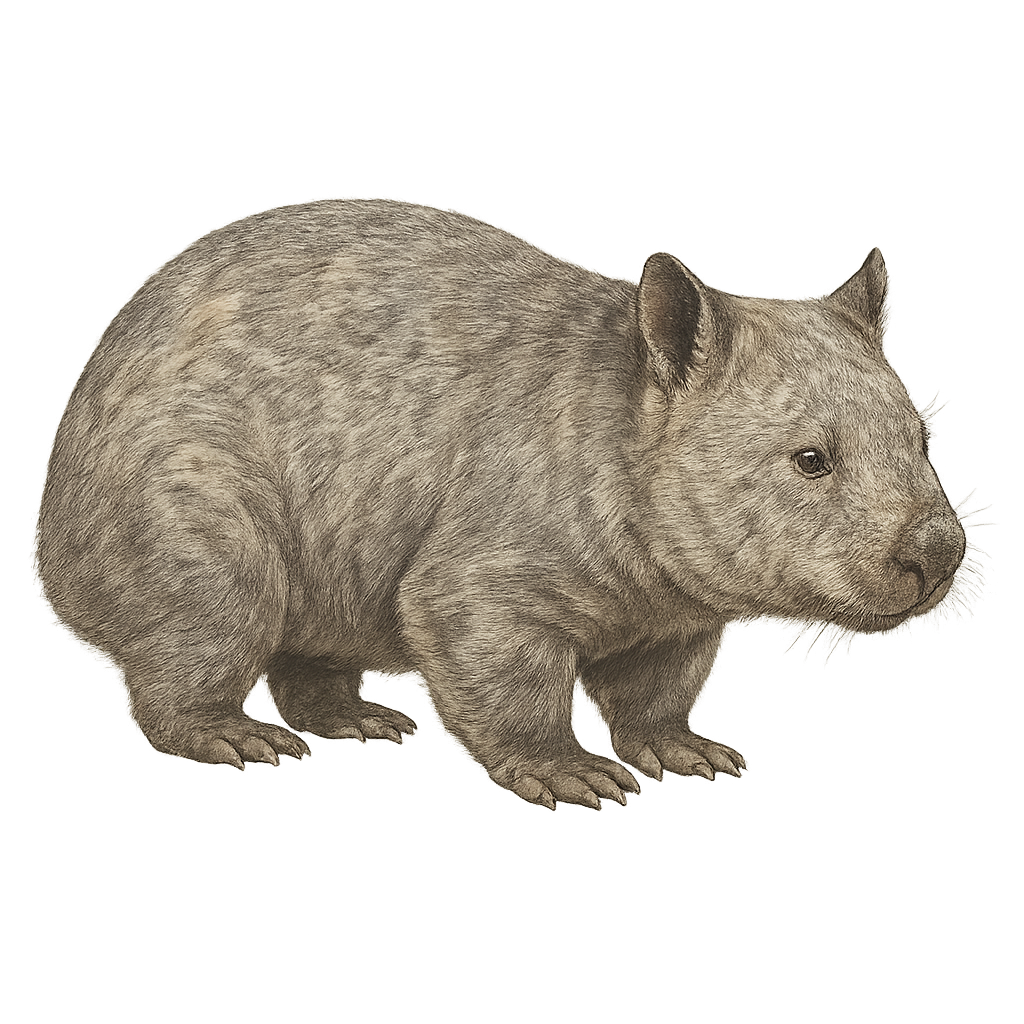Your wildlife photography guide.
Explore the northern hairy-nosed wombat in detail, study its behavior, prepare your shots.
Where to observe and photograph the northern hairy-nosed wombat in the wild
Learn where and when to spot the northern hairy-nosed wombat in the wild, how to identify the species based on distinctive features, and what natural environments it inhabits. The WildlifePhotographer app offers tailored photography tips that reflect the northern hairy-nosed wombat’s behavior, helping you capture better wildlife images. Explore the full species profile for key information including description, habitat, active periods, and approach techniques.
Northern Hairy-nosed Wombat
Scientific name: Lasiorhinus krefftii

IUCN Status: Critically Endangered
Family: VOMBATIDAE
Group: Mammals
Sensitivity to human approach: Suspicious
Minimum approach distance: 10 m
Rut period: October to December
Gestation: 21-22 jours
Births: October to January
Habitat:
Grasslands, open forests
Activity period :
Mainly active at night, generally discreet during the day.
Identification and description:
The Northern Hairy-nosed Wombat, or Lasiorhinus krefftii, is a rare and critically endangered marsupial native to Australia. This robust mammal is characterized by its hairy nose and dense, silky fur. It primarily inhabits grassy areas and open forests. Northern Hairy-nosed Wombats are expert burrowers, digging extensive burrows to protect themselves from predators and extreme weather conditions. They are mainly nocturnal, feeding on grasses and roots. Their population is extremely limited, with only a few dozen individuals remaining, making them one of the most endangered species in the world. Conservation of their habitat is crucial for their survival.
Recommended lens:
400 mm – adjust based on distance, desired framing (portrait or habitat), and approach conditions.
Photography tips:
To photograph the Northern Hairy-nosed Wombat, patience and discretion are key. Use a telephoto lens of at least 400mm to capture images from a distance without disturbing the animal. Wombats are primarily nocturnal, so plan your photo sessions early in the morning or late in the evening. Look for signs of burrows and set up at a safe distance to observe their natural behavior. Avoid sudden movements and use a tripod for stable shots. Natural light is ideal, but be prepared to adjust your settings for low-light conditions.
The WildlifePhotographer App is coming soon!
Be the first to explore the best nature spots, track rutting seasons, log your observations, and observe more wildlife.
Already 1 432 wildlife lovers subscribed worldwide

